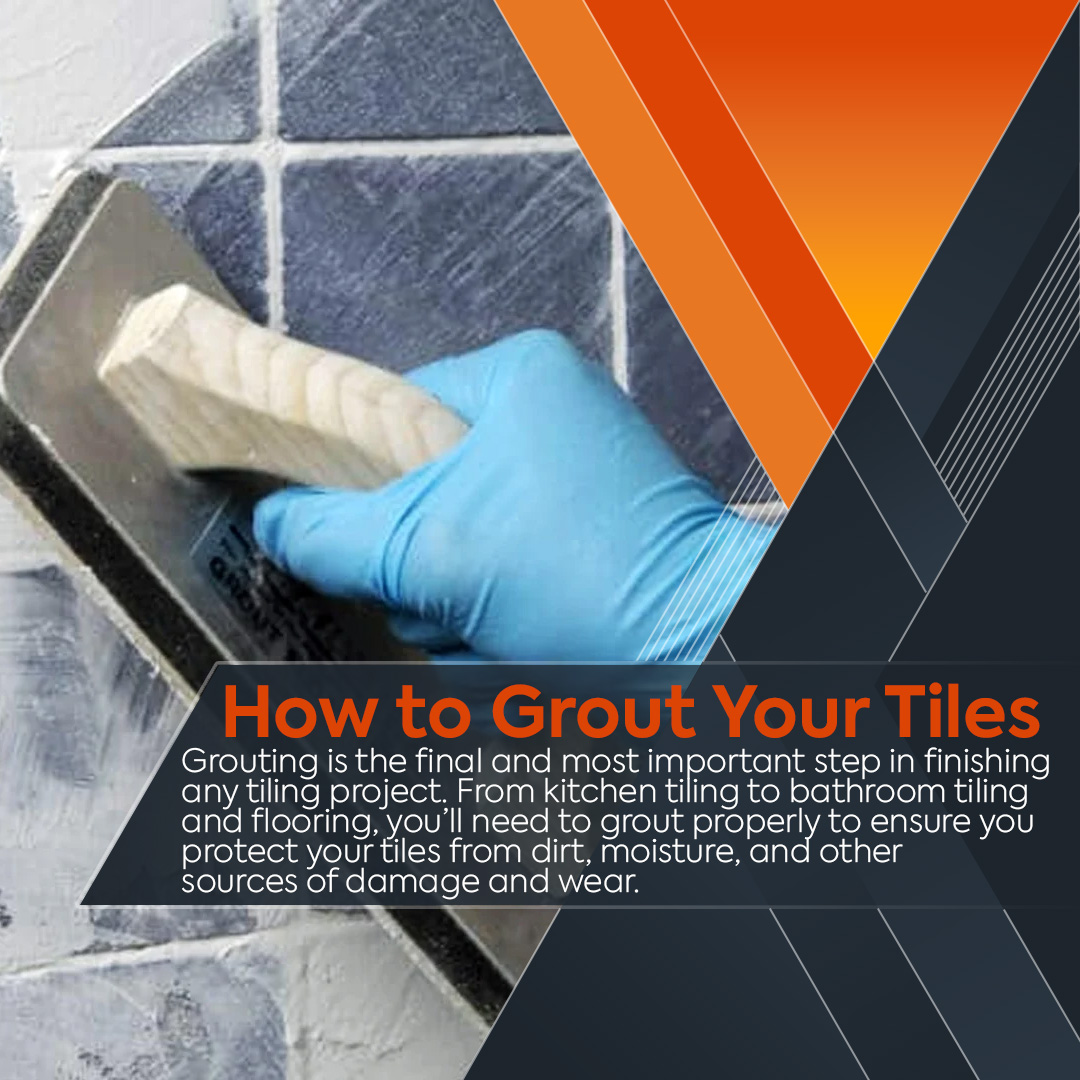What you’ll need to grout tiles
- Preparation
Preparation is key. Prepare your joints by taking out any excess adhesive. Do not chip the tiles but smooth out grooves between them. Remove larger particles and vacuum between the tiles to remove any smaller particles and debris.
TIP: Tape off any areas you don’t want to be covered in the grout, e.g. next to painted walls or edging
- Mix
Pour your chosen grout into a mixing bucket and follow the manufacturer’s instructions; you will likely need to add water to it whilst mixing with your trowel. Try moving the bucket slightly in a twisting motion, almost like a cement mixer.
Once all the water is absorbed into the grout you will notice the consistency change to an even sludge. Make sure you get any dry grout from the bottom of the bucket into the mix.
Once you’ve properly mixed your grout, leave it to stand for 5-10 minutes – allowing the mix to pre-harden very slightly, easing the process of application.
Note: it is important to use a whole bag of grout, which you’ve shaken well. This is due to the particles of colour, sand, and hardener needing to be mixed as one.
- Prep trowel and begin the application
You’ll now want to load your float, try and scrape your trowel around the bucket or barrel, keep the motion even and try to prevent grout from falling onto the floor.
Now it’s time to apply the grout. Apply generously and evenly. Try initially to load your wall with a generous layer of grout, enough to adequately fill the joints. Spread diagonally and forcefully to push grout deeper into the joints.
Work on smaller areas of around 2ft x 2ft before spreading more grout across the whole area as the joints begin to fill. Knowing when to stop can be tricky and it’s best to keep going until you can see that each groove is filled evenly and to the top.
- Remove excess grout
Use a squeegee or a similar rough but dry sponge to remove the bulk of the excess grout. The idea isn’t to scrub the wall clean yet, but simply to remove enough grout that you can see your tiles and assess the gaps between them properly.
Keep the tool you use for this nice and dry – you do not want to add any moisture into the mix at all at this stage
- Begin to sponge the surface
Now it’s time to step up the clean-up operation by using a moist sponge. Moist in the keyword here – ensure your sponge is not wet and especially not dripping
Sponge away until you’re revealing the surface of your tiles. At this stage, a nice and even finish should emerge. Diagonal movements are best here. You want to avoid pushing against the vertical and horizontal angles of the grout between the tiles.
- Fine-clean the lines
‘Tooling’ is the process of finishing your grout lines to a smooth and even finish.
Use a fairly dry sponge, just enough water to maintain lubrication, and push directly along the edges with your index finger. You want to avoid pushing the grout out – you’re just trying to level it between the tiles.
At this stage, your tile surfaces should be devoid of any real grout and will instead be covered with a little more than a ‘haze’
Note; It’s important to make sure the grout is fairly firm but not hard before you clean it. Check it regularly once applied as it is drying
- De-haze
Leave the grout for at least one hour or until it is fairly firm, otherwise, you’ll wash the dust into the grout. It will harden up considerably and you can begin de-hazing the tiles with a microfibre cloth. If the residue is difficult to remove, especially on course finish tiles then it may be best to use a grout stain remover.
Keep it fairly dry to avoid rubbing new moisture into the grooves and this will lengthen curing times. Work the haze off the tiles and it’ll be obvious when the haze clears and hopefully, you’ll reveal a freshly grouted wall or floor with evenly filled grooves!
- Let it dry
Different grouts will take longer to fully harden so pay attention to this, read the instructions on your chosen product, and keep the area completely dry during the process.
Once dry, you can now enjoy your freshly grouted wall or floor long into the future. In wet areas like showers, bathrooms, and kitchen splashbacks, you may want to consider the use of a grout and protector spray, creating a protective surface on the tiles to reduce limescale and grime build-up

